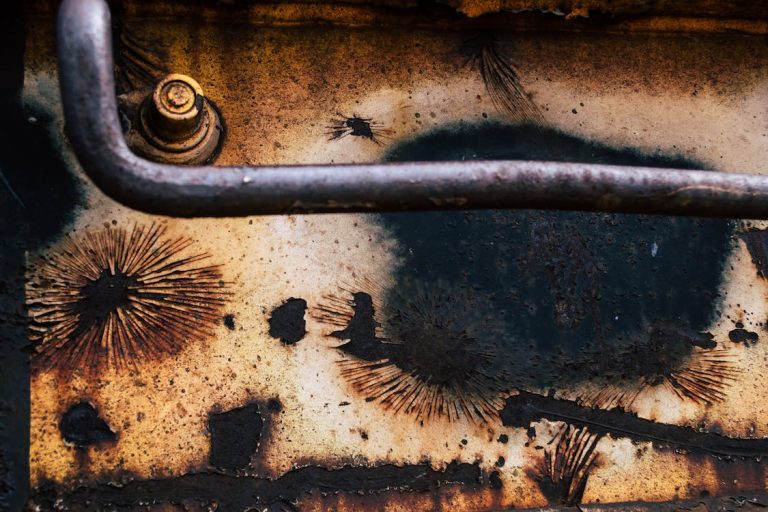Slab leaks refer to water leaks that take place beneath the concrete foundation of a building. These leaks can pose significant threats to both the structural integrity and safety of your property.
Slab leaks are often challenging to detect and can lead to severe damage if left unchecked. In this article, we’ll explore the signs of a slab leak and the potential risks they pose. We’ll also discuss the steps you can take to detect and fix them before they cause major damage.
Understanding Slab Leaks
Underneath or within the concrete foundation of your home, there are several water pipes. When these pipes develop cracks or are damaged in any other way, it leads to slab leaks. Corrosion, shifting soil, poor installation, and water pressure fluctuations are some of the major factors responsible for these leaks.
According to the United States Environmental Protection Agency (EPA), 10 percent of US houses have undetected water leaks. In many cases, the source of these leaks is the pipes in your underground slabs.
Since most of the plumbing is hidden beneath the foundation, slab leaks can go unnoticed for extended periods. This, in turn, allows water to accumulate and cause extensive damage. Thus comes the need to identify a slab leak as early as possible.
Signs of a Slab Leak
To avoid significant property damage and costly repairs, you must detect a slab leak at its earliest. For that, you need to be on the lookout for a few signs of slab leaks. These slab leak signs are discussed in brief below.
Unexplained Increase in Water Bills
A sudden and unexplained spike in your water bills could be indicative of a hidden leak, such as a slab leak. Rocket Money reports that the average US household water bill is around $70.93 a month. Yours might be something similar to this. If you notice a sudden increase in your bill and it remains the same for months, you might have a slab leak.
Damp Flooring
Moisture or water accumulation on your floors, particularly in areas without any apparent reason, also points to a possible slab leak.
Cracks in Walls or Floors
Slab leaks lead to a shift in your house foundation. This, in turn, causes cracks in your walls and floors.
Mold Growth
A slab leak can promote mold and mildew growth. You’ll notice a musty odor because of this and should assume that there are leaks in your concrete slab.
Running Water Sounds
If you can hear the sound of running water when all taps are turned off, there might be a leak beneath the slab. Listening closely to this sound, you might be able to identify the leak’s location. Although the precise location will be hard to detect, you’ll still get a rough estimate as to where the leak might be.
Detection and Diagnosis
If you suspect a slab leak based on the signs mentioned above, it’s essential to take prompt action. Hiring a professional plumber experienced in slab leak detection is crucial. Here are some common methods they may use to identify the source of the leak:
Pressure Testing
Plumbers can perform pressure tests to assess the integrity of your plumbing system. By isolating sections of the pipe and measuring pressure changes, they can pinpoint the location of a potential leak.
Video Inspection
Specialized cameras can be inserted into your plumbing lines to visually inspect for leaks, cracks, or blockages.
Dye Testing
A non-toxic dye can be introduced into the plumbing system to trace the path of water and identify leaks.
Repairing Slab Leaks
Once a slab leak has been identified, it’s crucial to address it promptly to prevent further damage. Here’s how you can go about the repair of these slab leaks.
Spot Repair
For smaller, isolated leaks, plumbers can excavate the area around the leak and repair or replace the damaged section of the pipe.
Re-piping
In cases where multiple leaks are present or the plumbing system is deteriorating, re-piping may be necessary. This involves replacing the entire plumbing system or sections of it.
Trenchless Repair
Some advanced techniques, like pipe bursting or pipe lining, allow for repairs without extensive excavation, minimizing disruption to your property.
As advised by 24/7 Plumbing Co., for the repairs, hire professionals who can provide all-around service when it comes to slab leak problems. This includes everything from the initial inspection and detection to the diagnosis of the problem and full system replacements. The company also suggests the use of modern leak detection technology including audio technology and waterproof video cameras.
It’s also suggested that you work with local plumbers for these repair jobs. That’s because they are more aware of the local conditions and industry best practices than other plumbers. Besides, local plumbing businesses can provide on-demand service 24/7. You can click here to learn more about hiring plumbers for slab leaks.
Preventing Future Slab Leaks
To minimize the risk of future slab leaks, here are a few measures you can take.
- Schedule routine plumbing inspections to identify potential issues before they escalate.
- Proper landscaping and irrigation practices can help prevent soil shifting, which can contribute to slab leaks.
- Install a pressure regulator to maintain consistent water pressure, reducing the strain on your pipes.
- Don’t ignore even minor plumbing issues, as they could indicate larger problems.
- Properly insulate pipes to protect them from temperature fluctuations and reduce the risk of corrosion.
Conclusion
According to Forbes, slab leak repairs can cost you around $3,100 on average. Hourly rates for these jobs are between $45 and $200. However, these expenses are necessary as they are vital in ensuring that your house doesn’t sustain additional damage from the leaks.
Understanding these leaks is also necessary. If you need, you can always refer to this article to better understand slab leaks and how to deal with them.

